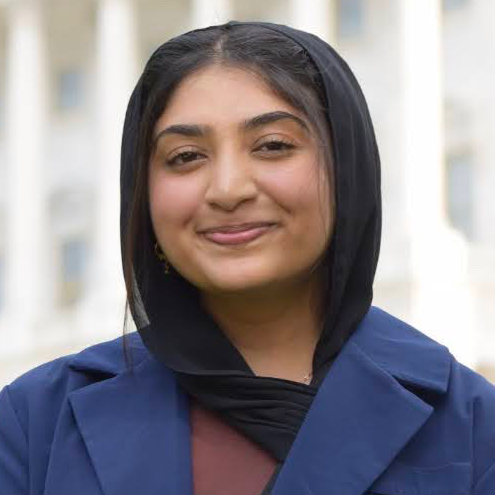The Asian American and Native Hawaiian/Pacific Islander (AANHPI) community in the U.S. is made up of more than 20 million individuals, and encompasses a broad and diverse array of ethnicities and experiences, both economic and otherwise. However, many of us are familiar with the “model minority myth” that purports our ‘success’ comes from a high commitment to education, hard work and deference to authority, and is used to drive a wedge between minoritized groups.
The “economic success” that the AANHPI community is said to have earned through our model minority status is also a myth. More than one in ten AANHPI women work in jobs with median hourly earnings below $15/hour, and research suggests that if the education and experience of AANHPI women was valued as highly as for white men, the wage gap would be $1.08 – that is, AANHPI women would be paid eight cents more for every dollar paid to white, non-Hispanic men.
For all AANHPI women workers, the gender wage gap is smaller than for other race and ethnicity groups and in 2022 stood at 80 cents for every dollar paid to white, non-Hispanic men; however there’s tremendous variation between groups. Asian American women are paid 89 cents to the dollar versus only 60 cents for NHPI women, and the gap varies even more between ethnic communities under the AANHPI umbrella from $0.49 for Bangladeshi women to $1.18 for Tawainese women.
A large part of why this gap exists, beyond racism and sexism, is nativism. Asian Americans make up more than a quarter of the foreign-born population, almost 4x more prevalent than in the population as a whole because we’ve only recently been allowed into the country in significant numbers. While some male Chinese and Japanese workers have been here since the early 1800s, although barred from citizenship, their female counterparts were prevented from immigrating until the end of the nineteenth century, and immigration from Asia largely opened up only in 1965. The reasons for immigration, whether a group came for education and work or as refugees, significantly impacts their earnings; this is further augmented by citizenship status, with millions of undocumented AANHPI and visa-restricted workers. Immigration patterns also tend to determine which states groups end up settling in. The states with the largest number of Asian American women and Native Hawaiian and Pacific Islander women overlap somewhat, but also span the nation and the gamut of local political priorities.
Almost 70% of Asian American women and almost 80% of Native Hawaiian and Pacific Islander women live in their respective 10 most populous states. This can play a powerful role in economic outcomes because of the policies a state chooses to implement. Raising the minimum wage is one way for states to reduce the gender wage gap as women are more likely to be minimum wage workers. Many states have raised their state minimum wage closer to a living wage, allowing them to account for the cost of living in their specific economic status despite the federal minimum wage remaining stagnant for 15 years. However not all states have done this, and the ratio between a state’s living wage and minimum wage varies widely (from $0.20 to $0.41 for households with one working adult and one child).
What’s a living wage?
A living wage is a theoretical hourly wage that a worker must be paid to cover their family’s basic needs. It varies based on family size and where someone lives. Included expenses are food, health care, housing, child care, etc. Not included are costs beyond basic needs; human beings also deserve joy.
New National Partnership research shows that both Asian American women and Native Hawaiian and Pacific Islander women are less likely to live in the ten states with the worst minimum wage to living wage ratios than other women of color groups, though they’re not more likely to live in the ten best states. In the 10 states they’re most likely to live in, Native Hawaiian and Pacific Islander women see a three cent narrower ratio of minimum wage to living wage ($0.31 vs. $0.28) and Asian American women see a five cent narrower ratio ($0.33 vs. $0.28) than in the other states.
There are clearly many factors that affect the economic situation and narrower wage gap for AANHPI women beyond individual characteristics. The influence of living in supportive states cannot be overlooked, as well as the work of AANHPI legislators who are working to make their states more supportive and equitable places to live but are underrepresented. Even though AANHPI Heritage Month has ended, we must continue the work to move past the model minority myth, embrace the richness of our communities and move forward to make policies that support us all.
Thank you to Molly Kozlowski, Jessica Mason, Kate Gallagher Robbins, Gail Zuagar, Mettabel Law, Sharita Gruberg and Travis Hunter for their significant contributions to this piece.


